Business Video Surveillance Insights for Loss Prevention Teams

Director Product Management
Business Video Surveillance Insights for Loss Prevention Teams
Introduction
The National Retail Federation reported that retailers lose about $700K for every $1 billion in sales to organized crime and theft.
Loss prevention teams in distributed enterprises and businesses such as retail and restaurant chains are ramping up investments in advanced video surveillance solutions in addition to tightening return policies, point of sale monitoring, and employee screening.
However, getting the basics right when implementing a business video surveillance system can provide a significant boost to the effectiveness of sophisticated loss prevention solutions.
In this blog post, we will cover:
- How to choose CCTV cameras that can get the job done
- Impact of camera technology on solution design
- Camera placement best practices for video surveillance
- Why vendor selection is critical for implementing the right solution
What is business video surveillance?
Business video surveillance refers to monitoring a place of business such as a retail store or office with CCTV cameras. The primary reasons for monitoring a place of business are to secure the business, gather evidence of a crime, and reduce instances of fraudulent liability claims.
There are various types of video surveillance used by businesses depending on the security needs and size of the business.
Onsite CCTV Monitoring – Small businesses such as independent stores or restaurants install CCTV (closed-circuit television) cameras with the footage being monitored and stored at the same location. The primary purpose of onsite surveillance is to dissuade crime, identify perpetrators of crime or theft, and assist law enforcement in investigations.
Remote Video Surveillance – Distributed businesses with a need to monitor security camera footage across multiple locations rely on a central monitoring location that gets direct or live Internet feeds from video surveillance systems installed at all the locations. Remote video surveillance involves the implementation of sophisticated video streaming, data storage, and video management software and provides advanced monitoring and video analysis capabilities to loss prevention teams.
Interactive Remote Video Surveillance – With remote video surveillance, the team that’s monitoring security camera feeds from a remote location can see what’s happening at all the locations but they can neither hear nor speak to the people at the store directly without picking up a phone. With Interactive video monitoring, the remote video surveillance team can hear and speak to the people being monitored via microphones and speakers installed at the location. With interactive remote video monitoring, loss prevention teams can perform additional tasks such as:
- Virtual tours to monitor all corners of the store or business location and identify vagrancy or undesirable activity around the business location or store.
- Voice-downs to deter shoplifting, enforce social distancing, or make announcements related to operations compliance based on specific events like a door opening or delivery personnel entering a location.
- Virtual escorts to help employees with cash movement, store opening/closing, or moving between secure locations.
The following sections explore video surveillance best practices that business owners and loss prevention teams can leverage to improve security and prevent loss.
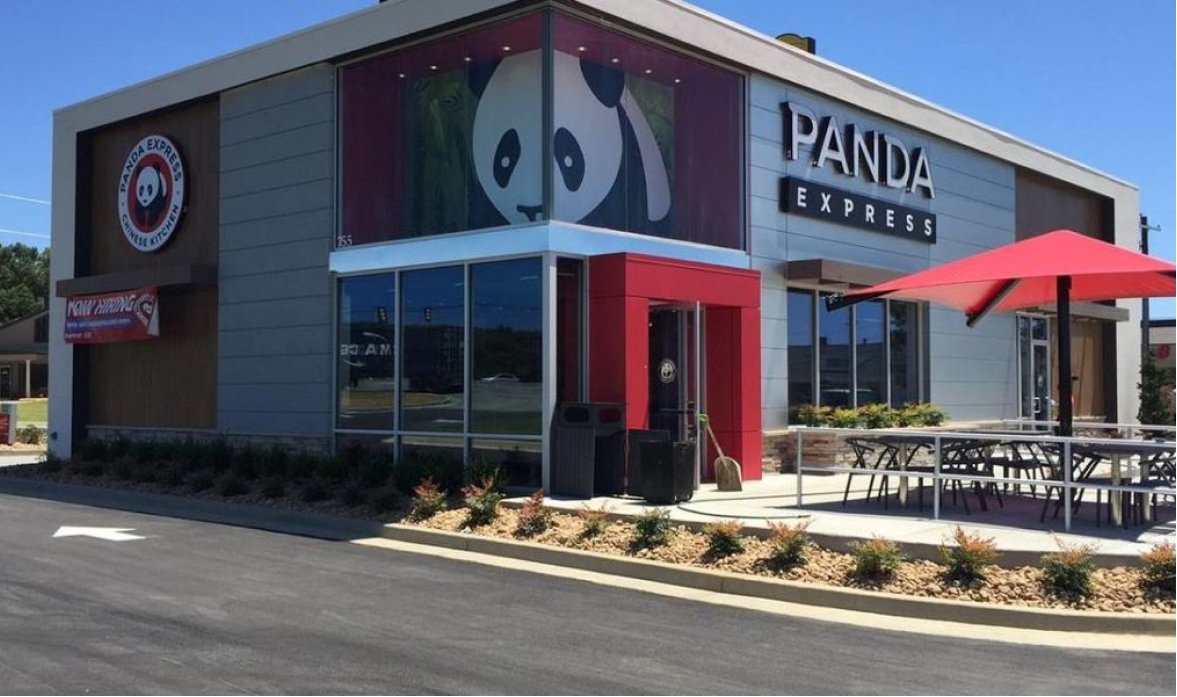
Find out how Panda Express uses Virtual Guards and Virtual Escorts to proactively secure their operations.
1. Choosing the right camera for the job
Security cameras used by businesses for video surveillance come in many shapes with different feature sets, technology, and applications. Choosing the right camera for meeting a specific objective is critical for loss prevention teams.
Indoor Vs Outdoor Cameras
Broadly, there are two types of cameras depending on where they are deployed – Indoor cameras and outdoor cameras. For commercial video surveillance applications, cameras rated for outdoor deployment are preferred for three key reasons.
- Indoor environments in businesses such as restaurants and industrial units have smoke, dust, and grease. For example, deploying indoor-rated cameras in a fast food joint may be a bad idea as cameras can be coated with grime or grease. Indoor-rated cameras become unserviceable in such environments whereas outdoor-rated cameras can remain functional as they are designed to keep dust and grease out.
- The price differential between indoor and outdoor cameras has come down over the years and outdoor cameras have a minimal cost differential to an indoor camera. The higher cost for outdoor cameras can be easily justified as they outlive indoor cameras and offer greater ROI for businesses.
- Outdoor cameras are designed to withstand heat, moisture, snow and work well in commercial establishments where perimeter security requirements such as in drive-through areas and parking lots are as important as security inside the premises.
Camera types and applications
Mini Dome Cameras
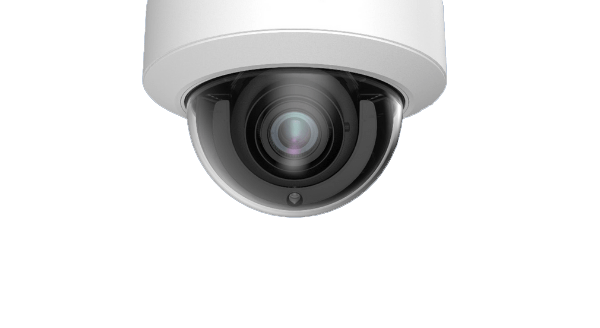
What are mini-dome cameras?
Mini-dome cameras are compact, versatile cameras that are cosmetically appealing and come with a wide variety of features that make them suitable for a wide range of applications.
What are the features of a mini-dome camera?
Mini-dome cameras have a mid-size form factor. The lens in these cameras is not clearly visible making it difficult to see where the camera is aimed thereby improving its overall effectiveness as a surveillance tool.
Mini-dome cameras are available with fixed and variable focal length lens options, remote-focus controls, wide dynamic range (WDR) capabilities that improve overall image quality when looking out doors or windows by creating a balance between the dark and bright areas of an image.
Some of them have infra-red (IR) illuminators and sensors for visibility in low/no light conditions, and built-in analytics capabilities, such as line-crossing detection, making them useful for a variety of monitoring requirements.
What are the use cases for mini-dome cameras?
Because they are both indoor and outdoor rated, mini-dome cameras can be used almost anywhere for a multitude of applications – lobbies, hallways, production floors, parking areas, entries/doors, sales areas. Outdoor versions are often used in indoor applications such as in kitchens and in freezers or coolers due to their weather-resistant capabilities.
Outdoor applications require proper planning as a poor choice of installation locations can expose the camera and internal parts to direct sunlight often resulting in overheating and a shorter life span.
Micro Dome Cameras
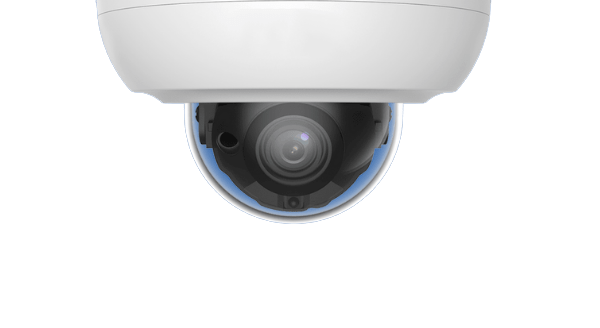
What are micro-dome cameras and how are they different from mini-dome cameras?
Micro-dome cameras are similar to mini-dome cameras but are smaller, thinner, often surface-mounted and less obtrusive. They have similar features as mini-domes but due to their smaller size may not have variable-focus lens options typically available with a mini-dome camera.
What are the features of a micro-dome camera?Micro-dome cameras have a similar set of features as a mini-dome but are generally available only with fixed-focal-length lenses.
What are the use cases for micro-dome cameras?Typical use cases for micro-dome cameras include observing checkout areas in retail and quick-service restaurants, ATMs, hallways, or walkways or anywhere a smaller size, less obtrusive camera may be desirable.
Turret Cameras
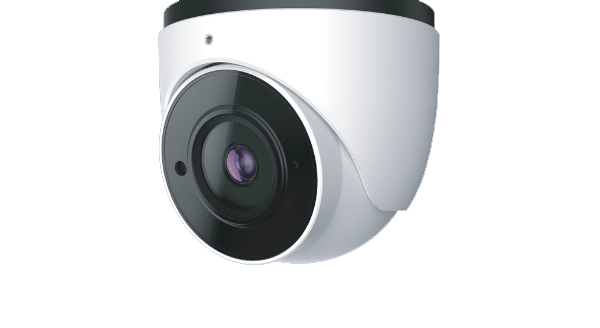
What are turret cameras?
Turret cameras are often called a flat-faced dome or eyeball camera resembling a sliced sphere in a ball-and-socket joint design which can be swiveled around in its “socket” once the base of the camera has been mounted. A turret camera has compact dimensions with the lens inside a housing as opposed to a dome.
What are the features of a turret camera?
Turret cameras have most of the features of mini-domes (fixed/varifocal, WDR, IR). Some turret cameras may have an IR feature known as EXIR, or extended infrared, a design where the camera lens and IR LEDs (light-emitting diode) are housed behind two separate windows which can eliminate infrared glare that is sometimes encountered in mini- and micro-dome cameras.
They are easy to install on a flat surface such as a ceiling or wall, rated for outdoor applications, and have a hardening rating to resist tampering or vandalism. The lens and internal components are better protected from environmental factors such as sunlight and moisture making them well suited to outdoor installations.
What are the use cases for turret cameras?
Turret cameras are used for observing sidewalks, entries, exits, drive-up lanes, or parking lots. They can also be used for indoor applications such as in kitchens as they are resistant to smoke, grease, and dust. However, unlike dome cameras, people being observed know where the turret camera is aimed at.
Bullet Cameras

What are bullet cameras?
Bullet cameras have a cylindrical shape, come in different lengths and sizes, are capable of observing long distances, and can be fairly noticeable. At a glance, anyone can see where bullet cameras are aimed and focused. Bullet cameras are most commonly used in outdoor applications, so their cases are made resistant to water, dust, and dirt.
What are the features of bullet cameras?
Bullet cameras have most of the features of other cameras (fixed/vari-focal, WDR, IR/EXIR) and while designed for both indoor and outdoor applications, are well suited to outdoor as their design protects the lens and internal components from direct sunlight and the elements.
They are well-built and outdoor cameras are designed to be vandal resistant. Bullet cameras are highly visible so they can also be used to act as a deterrent.
What are the typical use cases for bullet cameras?
They are suitable for outdoor applications such as parking areas, the entry and exit of people or vehicles to a facility. Due to their conspicuous design, they clearly indicate your premises are under video surveillance. They can be easily installed on a flat wall and they have the ability to withstand harsh environmental elements such as sunlight and storms.
Small-sized bullet cameras can be used for indoor applications where discreet monitoring may be needed from a distance, such as in a high-end boutique where a camera directly over the sales counter may not be desirable
PTZ Cameras
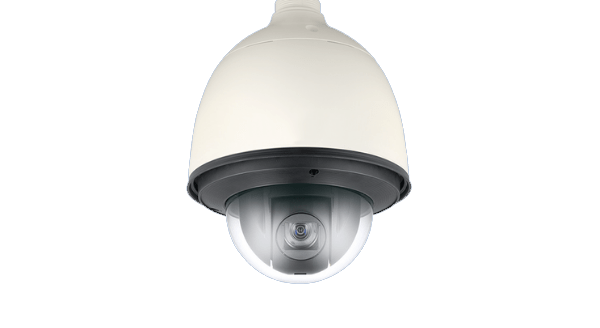
What are PTZ Cameras?
PTZ stands for pan, tilt, zoom. PTZ cameras are also called pendant cameras. PTZ or pendant cameras not only contain the lens, but they also let you rotate the camera to get up to 360 degrees of camera rotation when the installation allows for it.
What are the features of a PTZ camera?
PTZ cameras give operators the flexibility to focus and zoom on any object in its field of view.
Some PTZ cameras can be programmed to perform a tour of the area being monitored. The program can also include additional actions such as automatically focussing on specific events such as the opening of a gate or door. Once the area of interest or activity is recorded, the camera can resume the routine tour.
What are the typical use cases for PTZ cameras?
PTZ cameras are designed to monitor a large area, such as a big parking lot or a large indoor space. It is generally advisable to consider using other camera types if the objects being monitored are either fixed or if the area being monitored is relatively small as PTZ cameras are expensive and probably require more maintenance as they have moving parts
Box Cameras
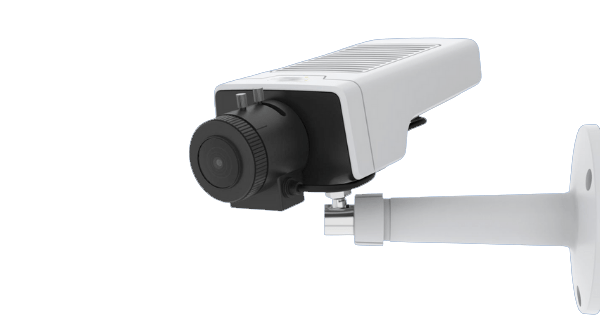
What are box cameras?
Box cameras house the camera lens in a box and have a similar construction found in a bullet camera. Box cameras are among the oldest camera models but continue to be used even today.
What are the features of a box camera?
Box-type cameras allow loss prevention teams to design the camera capabilities needed for video surveillance depending on the application.
For example, if the requirement is for a specific lens type and specification to observe an object of interest, a box camera can be designed to perform just the task.
What are the use cases of a box camera?
Box cameras are typically used for indoor applications. For outdoor applications, a box camera will need suitable housing to protect from heat, dust, and cold.
Box cameras may also be not suitable for recording in the dark or at night as most of them don’t have built-in IR capabilities and rely on a separate IR lighting system.
Box cameras require mounting hardware for all applications and this can add to the cost of installation or deployment when compared to other camera types
Fisheye Cameras
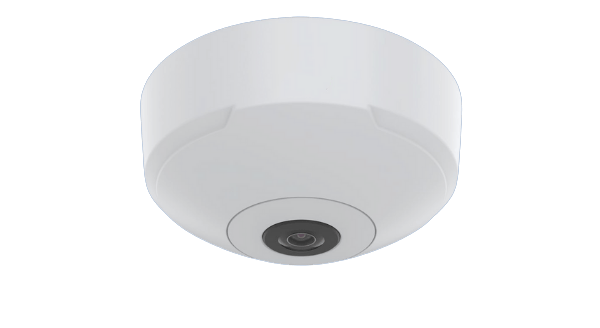
What are fisheye cameras?
Fisheye cameras utilize ultra-wide-angle lenses that are intended to create a wide panoramic or hemispherical image and achieve extremely wide angles of view.
Instead of producing images with straight lines of perspective, fisheye lenses use a special mapping, which gives images a characteristic convex appearance.
A common type of fisheye camera is known as a 360-degree camera which has an extremely wide-angle view of a large area, and produces a circular image. 360-degree cameras are typically mounted on the ceiling.
What are the features of a fisheye camera?
Fisheye cameras are designed to offer a general overview of where things are and what’s happening in a fairly large area under observation. They are not designed to capture the facial features needed to identify specific individuals.
Some fisheye camera models offer image de-warping features designed to remove the distortion associated with a wide-angled view of the video or image. While the de-warping feature generates multiple panoramic views, it is still not suitable for identifying faces.
What are the use cases for a fisheye camera?
Fisheye cameras are well suited for video analytics applications such as tracking the movement of people within a store, engagement with products or displays and creating heatmaps of activity in a particular area of the store

A fisheye camera shown here is used to generate a pathmap of customers who visit the store. A pathmap helps visualize and quantify how customers move within the store to help make decisions on store layout or determine display effectiveness at various parts of the store. Click here to learn more about how security cameras can uncover business insights in retail chains.
2. Implications of camera technology on security solution design
Camera technology has been rapidly evolving and businesses or enterprises looking to set up a video surveillance system at new locations or upgrading their legacy analog cameras now have to grapple with the plethora of technology choices and features.
Loss prevention teams looking to maximize ROI from security investments must tread carefully when designing CCTV upgrades or new installations.
This section provides an overview of the various camera technology options available along with a handy reference table that showcases practical applications of myriad camera features.
Camera types based on technology
In general, cameras can be classified on the basis of the technology that goes into the components and how videos from the camera are processed and stored. Each of these camera technologies has their advantages and disadvantages as outlined in the table below.
Analog Cameras
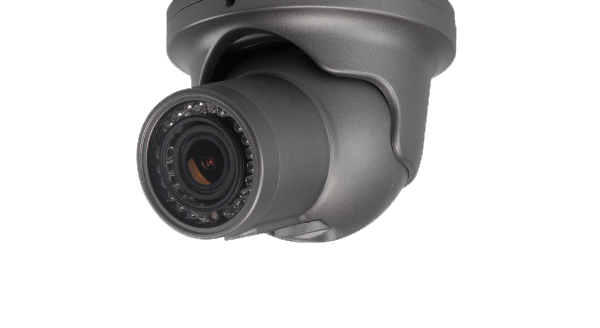
The original video recording method that stores continuous (analog) waves of red, green and blue intensities.
Traditional analog cameras measure resolution by the number of horizontal lines called TVL (TV Lines). A higher number of lines in an image means better resolution.
Advantages
Has been around for over 30 years. “Tried and true” and total TVL resolution has increased significantly over the years.
Disadvantages
Limited resolution (<720P).
HD Analog Cameras
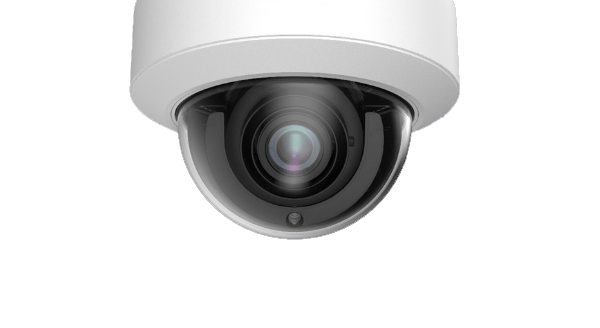
HD Analog video security cameras deliver megapixel resolution video over coaxial cabling (HD over coax) and use digital vs. analog signals to transmit video.
Advantages
HD analog technology allows you to record megapixel resolution video (1080p, 4K) over standard coax cabling, which is often already installed in your location.
Some benefits of HD analog include lower camera costs when compared to other technologies, simpler installations using the same process already in place for standard analog cameras, and the ability to upgrade or add HD analog cameras while retaining existing cameras.
HD analog cameras come in a wide range of features, styles and form factors, making them easy to fit into any location.
Disadvantages
You will likely need to upgrade your video recorder to be able to add HD Analog cameras. Older analog recorders do not support the HD analog standards.
There are multiple HD Analog formats (HD-TVI, HD-SDI, HD-CVI and AHD) with HD-TVI being the most prevalent. Hence, you must choose cameras and recorders that use the same standard.
IP Cameras
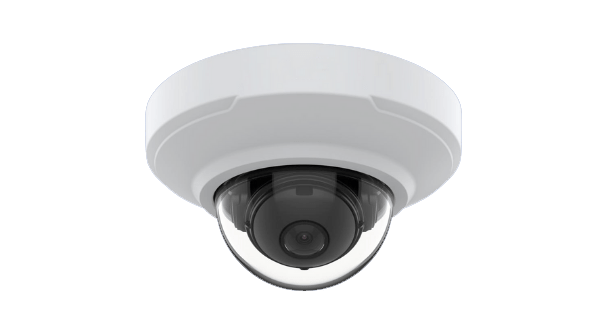
Internet Protocol (IP) cameras are a type of digital video camera that connects to your Ethernet local area network (LAN) and uses TCP/IP signaling to transmit video in a digital format.
Advantages
IP cameras come in a large variety of resolutions (720p to >8MP), form factors, and features giving you great flexibility when designing your surveillance system.
These cameras use the same category wiring (Cat5/5e/6) used for your computer network and can use Power over Ethernet (PoE) to power the cameras.
Many IP camera models support local storage using memory cards and have advanced analytical and AI capabilities available out-of-the-box.
Disadvantages
Often even “compatible” cameras and video recorders have exacting requirements to support the desired functionality.
When using IP cameras, it is considered a best practice to use video recorders from the same camera manufacturer to ensure full compatibility and access to advanced camera features.
IP cameras require ongoing maintenance to keep their operating system (firmware) up to date to prevent these devices, and potentially your network, from being compromised due to security vulnerabilities.
Thermal Cameras
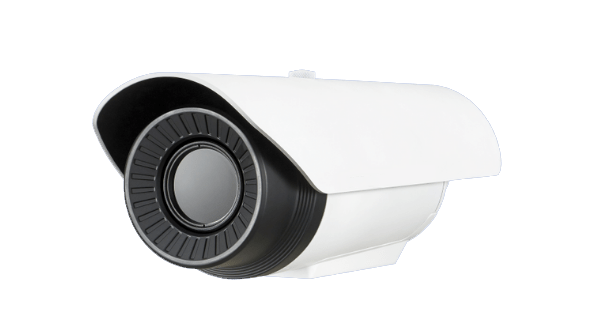
A thermal camera detects infrared (IR) energy (heat) emitted from the object and converts it into a visual image. The resulting image (i.e. a person) is displayed with various colors representing the approximate temperatures on the object.
Advantages
Thermal cameras are specialty cameras designed for very specific applications. Applications include the oil/gas/chemical industry where monitoring for non-visible objects (fire/heat/people) is required.
Most recent applications have been as supplemental devices to assist in monitoring people for higher body temperatures.
Disadvantages
Thermal cameras for monitoring temperature extremes are often application-specific and are often very expensive. Most commercial customers do not have applications requiring these cameras.
Using thermal cameras to monitor body temperatures is often unreliable as ambient temperature and other factors can create issues in accurately measuring body temperature.
Mapping security camera features to applications
The table below offers a comprehensive view of the various security camera features and how these features can be leveraged by loss prevention teams when designing a video monitoring solution.
Fixed lens cameras come with fixed lens focus. They do not have sophisticated moving parts or digital focus adjustment capabilities.
Cameras with adjustable lens focus that can be calibrated after installation to get the perfect field of view needed for the location.
Digital zoom crops a portion of the image and then enlarges it. This is not a feature of most cameras, rather it is a function of the video recorder or VMS software.
Optical zoom is a mechanical feature of the camera. Cameras with optical zoom have motorized telephoto lenses, allowing the user to remotely adjust the camera lens to zoom-in the camera for a closer view.
While optical zoom magnifies without losing image quality, digital zoom degrades the quality of the image.
Typically, commercial security cameras come in 2, 3, 4, 5 or 8 megapixel resolutions. Higher resolutions are available, at significantly higher costs.
The higher resolution will allow the loss prevention team to use a feature like digital zoom feature to verify if a store visitor actually slipped the watch into the pocket or read a logo on a shirt or clothing or hat to identify the suspect correctly or even get a proper facial shot.
However, a high-resolution camera is not only expensive off the shelf, but will also need a higher network upload speed to remotely view the high-resolution video and more storage to record the videos resulting in higher operating costs.
When using megapixel cameras, Digital Zoom capabilities are determined by the image width at the target location. A “pixel per foot” calculation is used to ensure that higher MP camera resolutions will be of any benefit in digital zoom.
Dynamic range is the measurement of the difference between the whitest whites and the blackest blacks in an image.
Cameras with True Wide Dynamic feature are capable of handling highly varying light levels and even capturing images properly against a bright backdrop. For example, cameras with True Wide Dynamic capability are placed inside retail stores facing the doorway. When the door opens and the space outside is under the blazing sun, the camera can instantly adapt to this light condition and manage to capture a clear image of people walking into the store.
Digital Wide Dynamic cameras may not have the dynamic range offered by cameras with True Wide Dynamic feature, but offer a cheaper alternative for loss prevention teams.
Frame rate is the speed at which images are shown and is usually expressed as “frames per second,” or FPS. Cameras and Video Recorders have both maximum and minimum frame rates.
More important than the maximum fps is the minimum frame rate. Settings for certain scenes (like a POS station) need to have higher frame rates.
Setting the fps too low can have adverse effects on the ability to capture video of critical events in busy, fast-paced scenes. Some higher megapixel resolution cameras or recorders may limit the maximum frame rate that can be recorded.
Designing a video surveillance solution requires a nuanced understanding of loss prevention objectives, infrastructure availability, choice of camera types, technology or features, and budgetary constraints.
Interface’s team of experienced security experts are available to assist loss prevention teams tackle complex security challenges.
3. Artificial Intelligence Enabled Video Surveillance
Here are some of the ways AI-powered video surveillance is revolutionizing physical security for businesses:
- AI-enabled video cameras can detect threats in real-time, enabling immediate alerts for security personnel to prevent incidents like theft or vandalism. Security teams monitoring surveillance cameras can now focus on handling alerts.
- AI-enabled video surveillance systems can learn normal patterns and identify anomalies such as repeated visits to areas with high-value merchandise or a group of people congregating in one spot.
- AI systems can easily tag videos with high levels of accuracy. Locating a video clip from hours of recording can be done easily to speed up investigations.?
- AI solutions can crunch large volumes of historical data to anticipate potential security vulnerabilities, allowing businesses to proactively identify vulnerabilities and optimize resource allocation.
Loss prevention teams looking to install AI-enabled cameras or video management systems that leverage AI should keep in mind the following potential pitfalls:
- Privacy Concerns: One of the primary drawbacks of AI-enabled video surveillance is the heightened concern over privacy. Advanced features like facial recognition can intrude on customers’ privacy, raising ethical questions about the extent of surveillance and data collection.
- Ethical Dilemmas: The use of AI in video surveillance, particularly with facial recognition or license plate recognition, raises ethical dilemmas. Issues such as consent, profiling, and potential misuse of the technology can lead to public mistrust and backlash.
- System Vulnerabilities: AI systems are not immune to vulnerabilities. Hacking and cybersecurity threats pose significant risks, as intruders may exploit weaknesses in the AI infrastructure, gaining unauthorized access to sensitive data or manipulating surveillance outputs.
4. Camera placement best practices for video surveillance
The number of cameras needed for effective video surveillance not only depends on the size of the location but also on what’s being monitored or protected at the location.
A jewelry store may have dense camera coverage to gain complete situational awareness of the movement or actions of people within the store and also be able to identify people. In a casual clothing store, general camera coverage may be adequate.
While there is no thumb rule that can be applied to any location to determine the placement of security cameras, loss prevention teams should consider four questions before designing camera placement:
- What do they sell or what are they protecting through video surveillance?
- What’s the value of the items being sold or protected?
- How easy is it to steal the items being protected?
- What’s the likelihood of theft?
Here are a few examples of how loss prevention teams can approach camera placements to address security threats unique to their business.
- Casing theft
- Sneak / Switch theft
- Internal theft
- Inside entry doors capturing high quality facial images of customers entering the store
- Display cases where high-value items are displayed
- Register(s) where employees handle cash transactions
- Shoplifting
- Hold-up/robbery
- Internal theft
- Inside entry doors capturing high-quality facial images of customers entering the store, along with Public View Monitors in higher-value goods areas such as health and beauty, baby food, and detergents
- POS areas where customer cash transactions take place. Place cameras to capture the faces of customers.
- Closed office areas and storage room spaces where employees are are hidden from view.
- Hold-up/robbery
- Internal theft
- Casing
- Areas where customer cash transactions take place (POS/Bar). Place cameras to capture the faces of customers.
- Rear entry areas (inside and outside) and storage areas, freezers, and coolers where employee theft occurs.
- Outside rear doors, areas where employees park, and dumpster areas, to protect employees from ambush or assault.
5. Choosing the right partner to implement a video surveillance solution
Designing a video monitoring system that’s really effective and delivers on what it’s supposed to do is a major challenge. There is a need to understand which camera to use. Camera placement, what features are critical for a customer, and make sure we get the most out of the investment that goes into building a video monitoring solution.
Some of the mistakes that enterprises and businesses make when implementing a video monitoring solution include:
- Making a large-scale bet on an unproven solution: Camera technology, cloud data storage, video compression technologies are rapidly evolving. However, embracing new technologies should be carefully calibrated after understanding how a solution that incorporates a new and emerging concept will deliver on the fundamental requirements:
- Can it produce usable video footage in all conditions?
- How quickly can the loss prevention team access the content they need?
- Is it cost-efficient?
- Choosing the equipment first: Solution design always comes first. Some customers choose the camera first and then try to build a solution out of it. This is a flawed approach as security requirements should dictate the choice of camera technology and not the other way around.
- Stumbling on critical deficiencies after implementation: Some enterprises record videos at very low resolutions and frame rates to save on network and storage costs. However, when video evidence is needed, the recording no longer serves the purpose. For example, the recording may not conclusively show that a person may have actually slipped something into his pocket from a counter! On the other extreme, some businesses implement cameras with 8K bitstreams which is a complete waste of video storage and also reduces the number of days security video recordings can be retained.
Buyers Checklist for Business Video Surveillance
This checklist is designed to help loss prevention teams review vendor capabilities for implementing or upgrading video surveillance systems.
Video Surveillance Solution Design
- Expertise in designing tailored video surveillance solutions that meet the unique requirements of each business location.
- Solution design process, considering factors such as camera placement, coverage optimization, and overall system efficiency.
- Experience in implementing video monitoring solutions for specific industries. For example, the solution design for monitoring jewelry chains is different from that of a restaurant chain.
- The flexibility of the solution design system to adapt to the varying sizes and complexities of different locations along with differing security threats across locations.
- Expertise in designing and implementing cloud-integrated solutions for video surveillance.
Camera and VMS Capabilities
- Experience in deploying a wide variety of camera types and features such as night vision, smart motion detection, and pan/tilt/zoom (PTZ) to align with the unique requirements of each business location.
- Experience in deploying advanced cameras with purpose-built analytics for specific security needs, such as intrusion detection or license plate recognition.
- Track record of successfully implementing video management systems (VMS) for businesses of similar size and complexity.
- Experience in integrating AI and analytics features seamlessly into their video management system.
- Experience in scaling video surveillance solutions to handle a large number of cameras and locations concurrently.
- Approach to ensuring continuous video surveillance in the event of network or hardware failures.
Remote Monitoring Capabilities
- Monitoring infrastructure, technologies used for monitoring, certifications, and redundancies available at all monitoring locations.
- Approach to hiring, training, and retaining remote security teams for monitoring.
- Customer onboarding and escalation process alignment capabilities.
Storage, Network, and Security
- Experience in designing reliable video storage systems with redundancy measures, including failover strategies and backup protocols.
- Approach to managing bandwidth efficiently, especially when utilizing cloud-based storage for video footage.
- Strategies for optimizing performance as the system scales, including load balancing and resource allocation./li>
- Expertise in building secure networks for video surveillance, including encryption protocols and network segmentation.
- Experience in protecting video storage from unauthorized access or cyber threats.
- Knowledge and adherence to regulations related to network security, data storage, and NDAA compliance for video surveillance systems.
- Compliance with industry-specific or location-specific regulations that may impact network design for video surveillance.
Other Considerations
- Size and scale of services offered by the vendor and ability to deploy cost-effective camera hardware and networking equipment.
- Partnerships with camera and network OEMs and preferential access to the latest technologies.
- Ability to offer visibility on project progress and ongoing management of security hardware and assets via online customer service portals.
- Support services offered and SLA guarantees.
- Training provided to employees at the location being monitored and the loss prevention teams managing the program.
- Ability to deploy onsite support teams at all locations where video surveillance hardware is being deployed.
- Commitment to staying abreast of advancements in video surveillance, remote monitoring, networking, and storage.
Share this article
Get the next-generation video surveillance solution
About the author

Director Product Management
Don Fruhwirth is Director of Product Management at Interface Security Systems. He brings more than 20 years of expertise in security integration strategies, next-generation networking design and wireless system architecture. Don has enabled numerous enterprises in transforming their IT and asset protection system infrastructures. Don is an industry thought leader and frequent speaker on topics such as SD-WAN, cloud video architectures, remote video surveillance and advanced network security. Prior to joining Interface, Don has held senior solution engineering positions for regional security and global cellular telecommunications companies. In addition to his security background, Don holds advanced networking certifications from Cisco, Fortinet and Cradlepoint.
Explore more blog articles
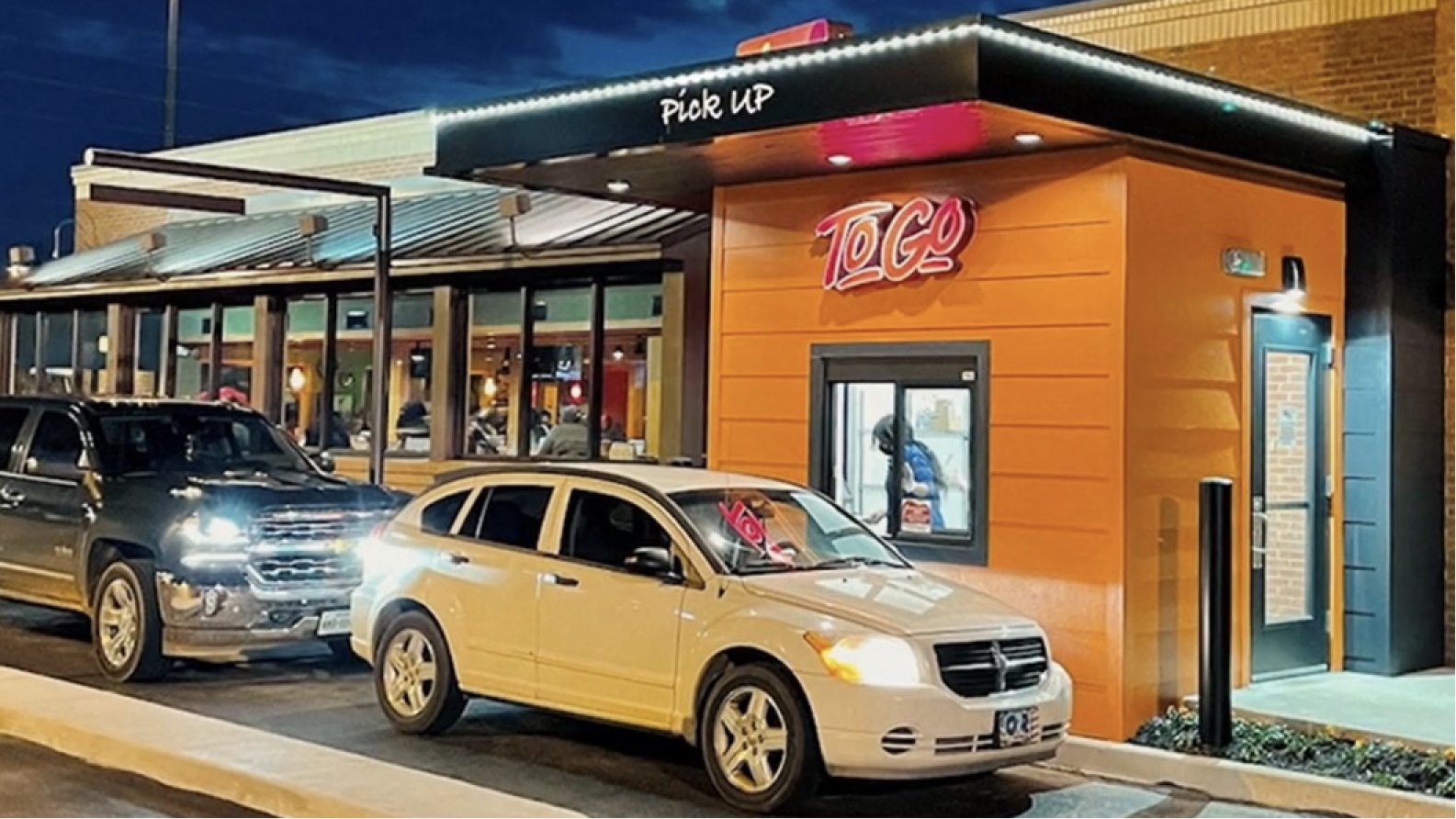
7 Groundbreaking Drive-Thru Concepts and Trends for QSRs in 2024
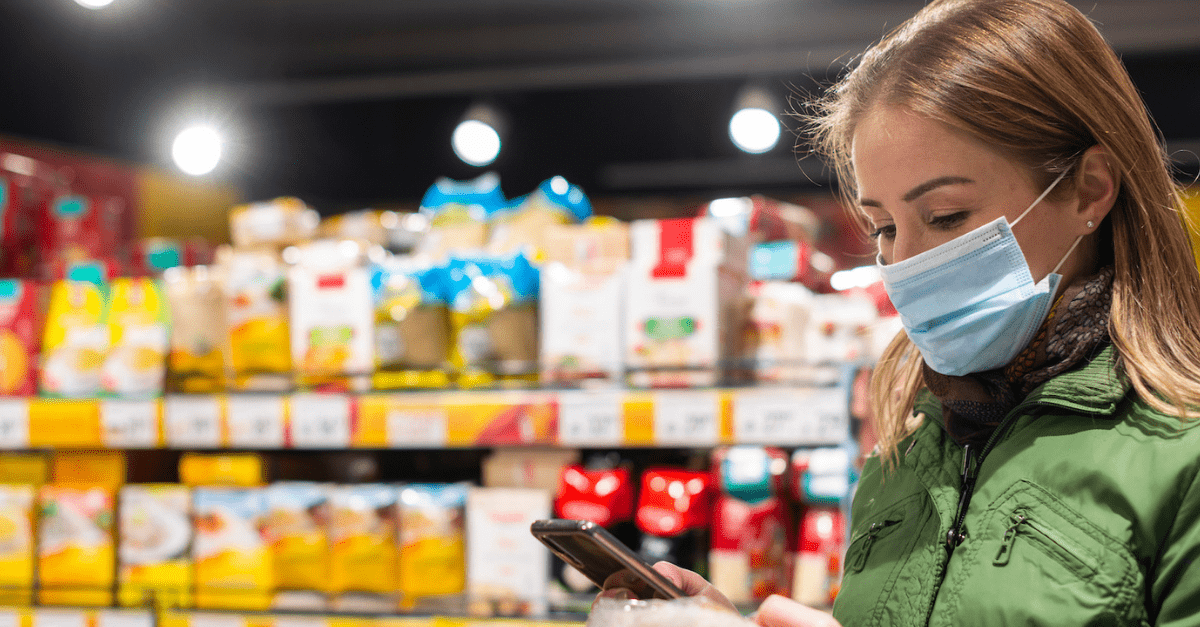
Retail Network Transformational Insights
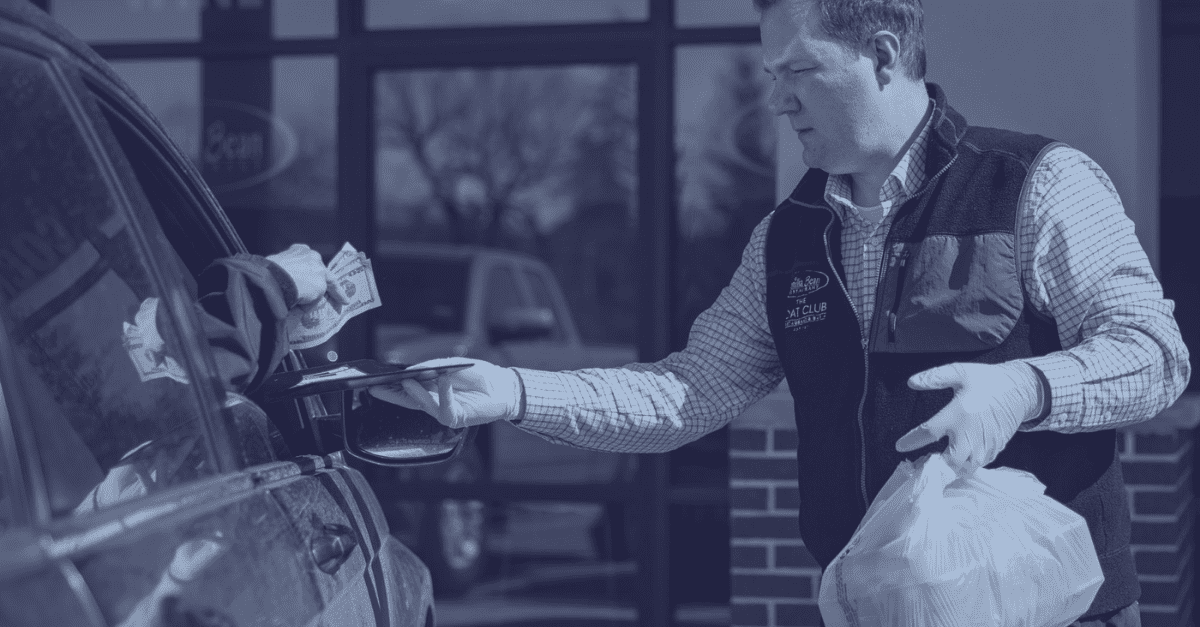
5 Essential Steps to Create a Lone Worker Safety Policy
Connect with Our Experts
Interface solution experts are ready to help you solve challenges. Set up a no-obligation, exploratory call now.